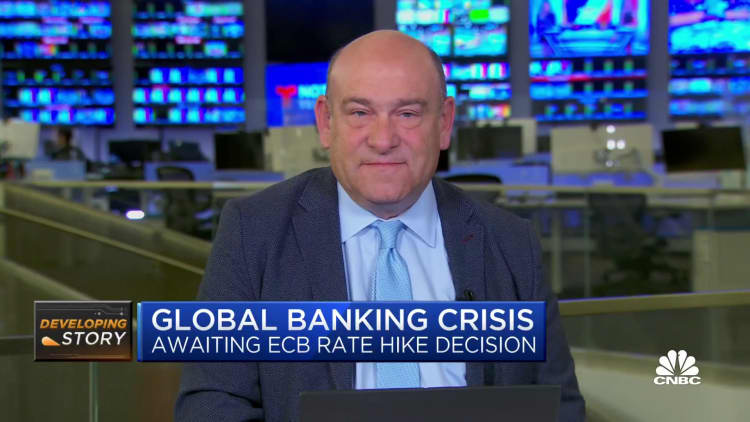The tech industry continues to hand out pink slips to employees as the threat of a recession grows every day. Yet, despite the clouds in the distance, investors continue to debate whether it’s wiser to buy stocks that are poised for growth or ones brimming with value.
As CNBC contributor Bob Pisani sees it, value and growth are often grouped together. He cites Microsoft (NASDAQ:MSFT) as a classic example. Standard & Poors calls it both. And the index publisher classifies ExxonMobil (NYSE:XOM) as purely a growth stock. XOM was a cash flow gusher the past two years, but it’s hardly what most people classify as growth. Heck, it sells a product that one day could be no more.
In 2023, the iShares S&P 500 Value ETF (NYSEARCA:IVE), which tracks the performance of the S&P 500 Value Index, is up 0.3%. The iShares S&P 500 Growth ETF (NYSEARCA:IVW), which, you guessed it, tracks the performance of the S&P 500 Growth Index, is up nearly 5.3%. In other words, growth is back, baby.
However, I’m looking for established stocks to buy that are poised for growth in 2023. To make my list, a stock must be held by IVW, founded in the 20th century, and expected to grow revenue and profits by 10% or more in the year ahead.
| NVDA |
Nvidia |
$264.68 |
| UNH |
UnitedHealth Group |
$475.52 |
| V |
Visa |
$220.04 |
| DE |
Deere & Co. |
$394.97 |
| PGR |
Progressive |
$136.69 |
| INTU |
Intuit |
$414.21 |
| SBUX |
Starbucks |
$99.12 |
Nvidia (NVDA)
Nvidia (NASDAQ:NVDA) makes the cut. The stock is IVW’s third-largest holding, was founded in 1993, and is estimated to grow revenue and earnings per share by 10% and 34.4%, respectively, this year.
I’ve been a big fan of Chief Executive Officer (CEO) Jensen Huang. In September 2021, I called Huang America’s most influential CEO. The stock might be down from its late-2021 highs, but Huang continues to make the right moves for the company’s long-term growth.
Huang spoke about artificial intelligence (AI) at the company’s GTC 2023 conference this week. In addition, Nvidia issued several press releases regarding AI on March 21.
“The warp drive engine is accelerated computing, and the energy source is AI,” Huang said in his keynote at the company’s GTC conference. “The impressive capabilities of generative AI have created a sense of urgency for companies to reimagine their products and business models.”
Huang suggested that AI is this generation’s iPhone moment. I think he’s right.
UnitedHealth Group (UNH)
UnitedHealth Group (NYSE:UNH) is the IVW’s seventh-largest holding, was founded in 1977, and has revenue and EPS growth estimates of 11% and 12.4%, respectively, for this year.
UnitedHealth rightfully calls itself a “health care and well-being company” because it does much more than provide health insurance for millions of people in the U.S. and elsewhere.
In 2022, it generated revenue of $182.8 billion, 17.5% higher than a year earlier, with $14.1 billion in earnings from operations, also up 17.5% from a year earlier.
The company’s Optum Insight reporting segment provides software and data analytics to health plans to help them navigate the complexities of the healthcare system. At the end of December, the division’s order backlog was $30 billion, of which $16.8 billion would be generated in 2023.
Unsurprisingly, 22 out of 26 analysts covering the stock have an “overweight” or “buy” rating on it with an average target price of $597.96. That’s 26% above where it’s currently trading.
Visa (V)
Visa (NYSE:V) is the IVW’s 10th-largest holding. Its underpinnings began in 1958, although Visa Inc. wasn’t officially created until 2007. Analysts are calling for revenue growth of 10.4% this year and EPS growth of 12.5%.
In early March, the Ontario Teachers’ pension — one of Canada’s largest public service pension funds — filed its 2021 annual report. It’s a good idea for investors to examine these reports. They’re chock-full of interesting details.
The pension fund revealed that it initiated a position in Visa, buying 2.2 million shares in the fourth quarter. That’s a sign that the fund likes where the financial services company is headed.
And how could you not? V stock is up nearly 90% over the past five years, 33 percentage points higher than the S&P 500. So in good times and bad, it’s a fintech to own.
Deere & Co. (DE)
Deere & Co. (NYSE:DE) is the IVW’s 32nd-largest holding. It was founded in 1837 by John Deere, and this year’s revenue and EPS growth estimates are 13.5% and 31.1%, respectively.
The company delivered fiscal Q1 2023 earnings in February that were off-the-charts good. Analysts expected sales of $11.28 billion and EPS of $5.57. Revenue came in at $11.4 billion, while earnings beat by 98 cents a share.
Things are so good the company raised its earnings expectations for 2023 from $8.25 billion at the midpoint of its guidance in November to $9 billion. You don’t see too many names among IVW’s holdings upgrading their guidance like that. It’s a sign of more good things to come.
“‘Solid start to fiscal year 2023,’ wrote Baird analyst Mig Dobre in a Friday report. This ‘is the year we’ve been waiting for as the supply chain is starting to allow for sizable production increases while the positive price/cost gap reaches a decade-plus high,’” Barron’s reported.
Analysts generally like DE with 18 “overweight or “buy” ratings, eight “holds” and zero “sells.”
Progressive (PGR)
Progressive (NYSE:PGR) is IVW’s 42nd-largest holding. It was founded in 1937 in Cleveland, and its revenue and EPS growth estimates for this year stand at 17.7% and 44.8%, respectively.
Morningstar senior analyst Brett Horn has a love-hate relationship with Progressive. On the one hand, he considers it an excellent company, possessing “one of the strongest franchises in the insurance industry.” On the other hand, he notes it’s an expensive stock “trading well above our $99 fair value.”
With shares trading at nearly $137 currently, I can see why he’s hesitant. However, sometimes you have to pay more for quality.
If you are a dividend investor, you should be interested in the company’s dividend policy. Progressive pays a quarterly dividend of 10 cents per share for a forward annual yield of 0.3%. However, it also pays a variable dividend, which is at the board’s discretion. In 2022, it passed on paying out a variable dividend, opting to invest the funds in growth initiatives. In 2021, however, it paid out $5.90 in variable dividends, and it paid out $2.25 in 2020 and $2.41 in 2019.
Between 2019 and 2022, the company paid out $12.26 in total dividends. That’s an average of $3.06 a year for an attractive 2.2% yield.
Intuit (INTU)
Intuit (NASDAQ:INTU) is the ETF’s 53rd-largest holding. It was founded in 1983, and its 2023 revenue and EPS growth estimates are 11.3% and 16.5%, respectively.
Let’s face it; there are no bigger couple of words in business today than artificial intelligence. Bill Gates says so. And he’s a pretty smart dude.
“The development of AI is as fundamental as the creation of the microprocessor, the personal computer, the internet, and the mobile phone,” Gates stated on his blog.
Intuit CEO Sasan Goodarzi is focused on getting his entire headcount AI-literate. The idea is that the whole company works to possess transferable skills across its many departments, including IT. By creating a culture of learning, Intuit will be fully equipped for the AI future.
As Goodarzi stated in the company’s Q2 2023 conference call, the company has five big bets: “revolutionize speed to benefit, connect people to experts, unlock smart money decisions, be the center of small business growth and disrupt the small business mid-market.”
You’ll notice that the first one is directly related to AI. That’s excellent news if you’re a long-time shareholder.
Starbucks (SBUX)
I didn’t think I’d have to go to the 55th company in IVW to get my seventh selection. That tells you all you need to know about the growth prospects for S&P 500 companies in 2023. They’re not good in the eyes of analysts.
Starbucks (NASDAQ:SBUX) was founded in 1971, and its 2023 revenue and EPS growth estimates are 11.4% and 14.9%, respectively.
The company moved up its plan to move Laxman Narasimhan into the CEO chair two weeks early, announcing on March 20 that Narasimhan was now in charge. Narasimhan was formerly CEO of Reckitt Benckiser Group (OTCMKTS:RBGLY) for over three years. Before that, he held executive positions with PepsiCo (NASDAQ:PEP) and was a consultant with McKinsey.
Starbucks was recently named the most-valuable restaurant brand in the U.S. for the seventh consecutive year. It constantly does an excellent job of reinventing itself. As a result of that hard work, it has a 10-year annualized total return of 14.5%, 244 basis points higher than McDonald’s (NYSE:MCD).
On the date of publication, Will Ashworth did not have (either directly or indirectly) any positions in the securities mentioned in this article. The opinions expressed in this article are those of the writer, subject to the InvestorPlace.com Publishing Guidelines.
Will Ashworth has written about investments full-time since 2008. Publications where he’s appeared include InvestorPlace, The Motley Fool Canada, Investopedia, Kiplinger, and several others in both the U.S. and Canada. He particularly enjoys creating model portfolios that stand the test of time. He lives in Halifax, Nova Scotia.
















